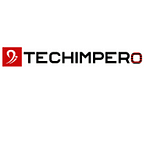Difference between On-page & Off-page optimization | SEO company in delhi
The search engine optimization strategy can be divided into the two different categories: on-page SEO and off-page SEO. Both are crucial to the success of an SEO campaign, but they are on completely different sides of the fence. Techimpero is India’s one of the best SEO companies in Delhi. We are offering a wide range of SEO, Digital Marketing, PPC management and Google Adwords services all over India. With relevant Marketing plans crafted as per your needs, we aim to help grow your business. Best Seo company in Delhi
There are the two main buckets that search engines look at when evaluating your site compared to other sites on the web.
On-page SEO: It looks at what your site (or your page) is about
Off-page SEO: It looks at how authoritative and popular your site is
On-page SEO: It (also known as “on-site” SEO) is the act of optimizing the different parts of your website that affect your search engine rankings.
Title Tags: You need to put your targeted keywords in the title tag of each page on your site. There are many best practices which go into writing an effective title tag.
Limit your title tags to 55–60 characters (including spaces)
Push the keyword closer to the beginning of the title (ONLY if it sounds natural)
Do not stuff your keywords
Include brand at the end of the title tag, separated by a pipe bar (|)
Example: “Chicago SEO | Digital Third Coast”
Headings (H1): They are usually the largest words on the page, and for that reason, search engines give them a little more weight than your other page copy. It is a good idea to work your target keywords into the headings of each web page but make sure that you accurately reflect your page’s great content.
Make sure your H1s limited to one per page, all other headers are H2 or H3
URL structure: Put keywords into your URLs if possible. However, do not go changing all of your current URLs just as they have keywords in them. You should not change old URLs unless you plan on redirecting your old ones to your new ones. Consult a professional before doing this.
- Label your directories and folders in a way that makes sense for users
- Do not repeat keywords in your URL more than once. Keywords are
- helpful, but overdoing it affects the user experience.
Example: /best-socks-comparison-best-socks-best-socks?
- Keep URLs as short as possible
Alt text for images: Any content management system should allow you to add something called “alt text” to all images on your website. This text is not visible to the average visitor — it is in fact used by screen reader software to help blind internet users understand the content of your images. Keep the following things in mind when writing alt text:
- Thoroughly describe the image in 8–10 words
- Include your targeted keyword where it sounds most natural
- Include, if relevant, a geo-locator (e.g., Chicago)
Fast-loading pages or page load speed: Google has a tool called PageSpeed Insights that will analyze your site on both the mobile and desktop and then suggest tips to optimize page speed. There are several quick fixes to eliminate whatever is bogging your site down and slowing your page load time. Key site speed factors to consider:
- Minimizing HTTP requests
- Making sure server response time is <200ms
- Setting browser caching to at least a week or longer
- Enabling Gzip compression
- Having image sizes fewer than 100kb (.jpg, .png, .gif)
- Placing all CSS in an external style sheet
- Minifying all JS, CSS and HTML
- Prioritizing above the fold content loading
Mobile Friendliness: You can plug in the site’s URL into this test, and Google will tell you how friendly the website is based on its current algorithm. Beyond mobile page load, the website design needs to factor in the mobile user experience. One way to check and optimize the website layout for mobile is to generate a Mobile Usability Report which identifies any issues your website may have.
Also Read: Advantages of Search Engine Optimization
Off-Page SEO: It focuses on increasing the authority of your domain through the act of getting the links from other websites. A good analogy for how the authority works is this. If you have a bathtub with the rubber duckies in it (the ducks are your pages), and you start filling the tub with water (links), your duckies are all going to rise to the top. This is how a site like Wikipedia ranks for pretty much everything under the sun. It has so much water in its bathtub that if you throw another rubber duck in it, it is going to float to the top without any other effort.
There is a score called “Domain Authority” that calculates how authoritative your website is compared to the other sites.
SEOs also used to believe that buying the links was a valid way of link building; however, Google will now penalize you for buying links in an attempt to manipulate page rank. You can also be penalized for submitting your links to link the directories whose sole purpose is to increase your domain authority. Again, the quality wins out over quantity when it comes to link building.
